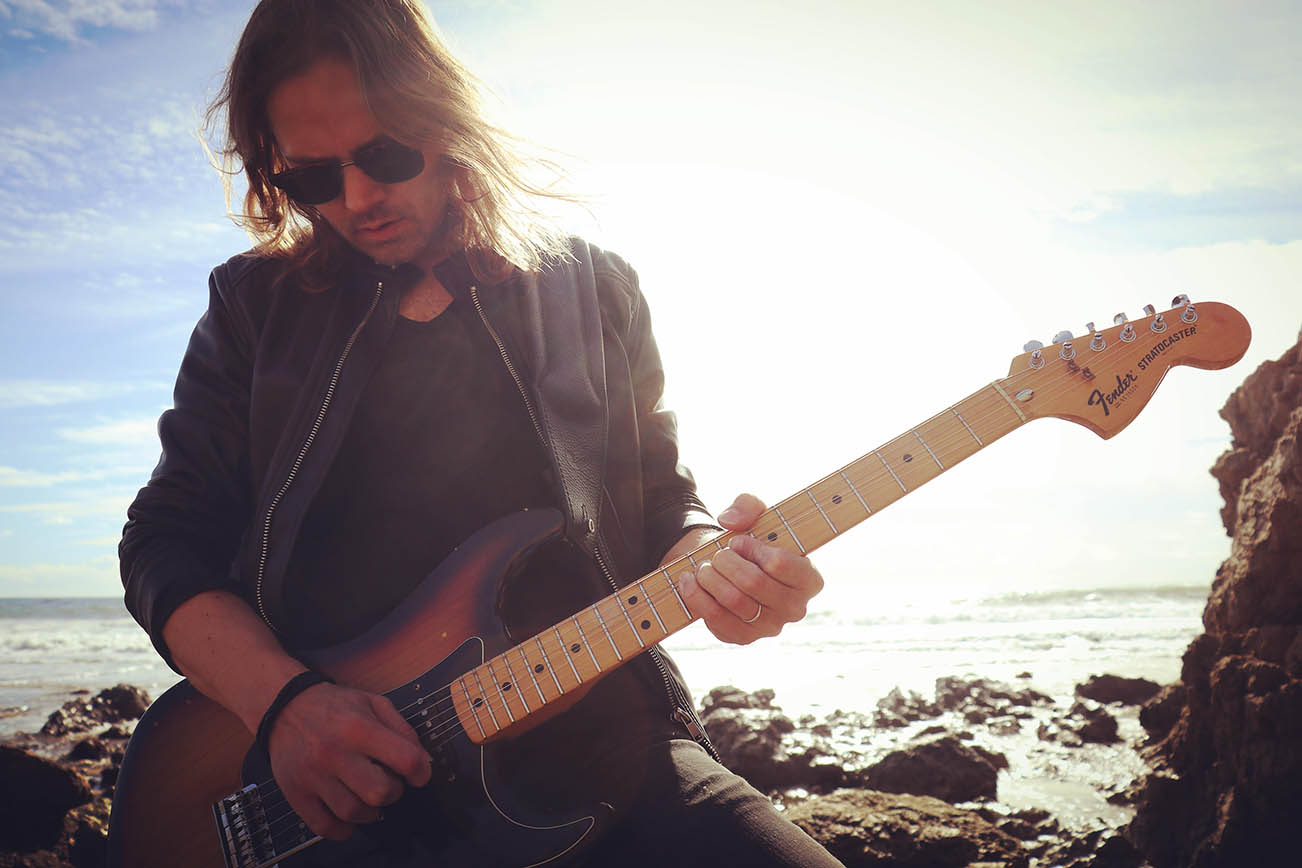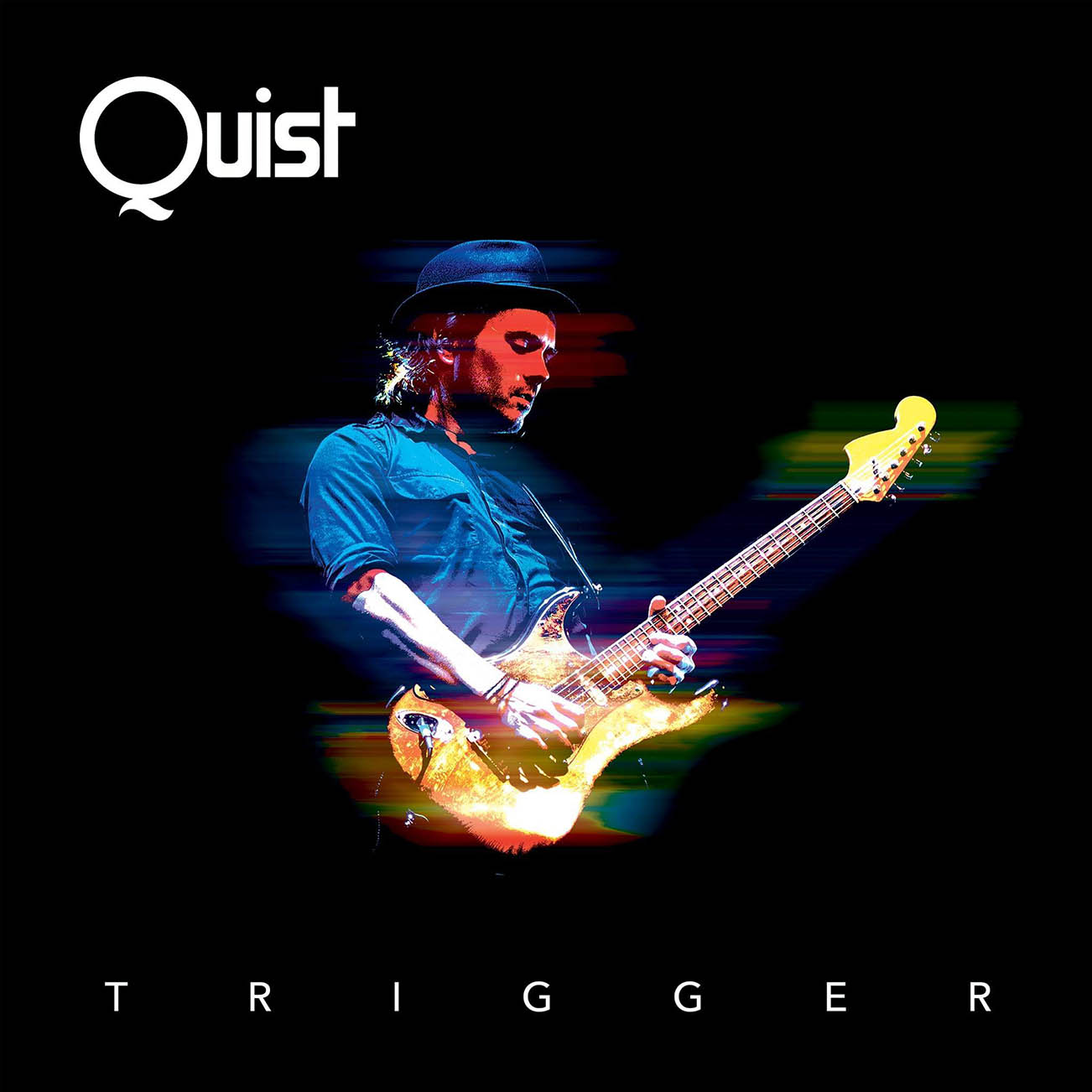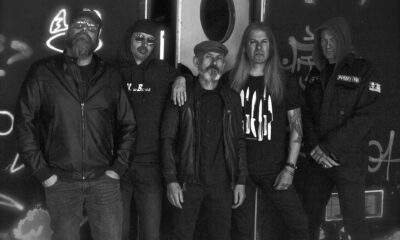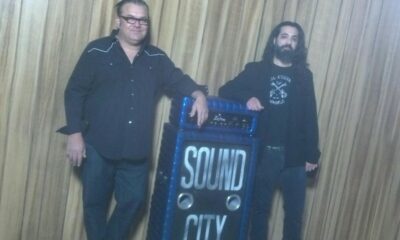Geared Up
Geared Up: Danish Guitarist Quist Talks About His Strymon TimeLine Delay Pedal
Danish guitar virtuoso Quist knows his stuff and, thankfully, was not only down to talk gear, but also elaborated on his Strymon TimeLine Delay Pedal!

On April 28th, Danish guitar virtuoso Quist (aka Jacob Quistgaard) released his latest (and first instrumental) album Trigger via Fretmonkey Records — purchase a copy via iTunes here. Aside from his incredible musicianship, the album also boast an all-star cast of contributing musicians, including Guy Pratt (Pink Floyd, Michael Jackson), Dave De Rose (Mark Ronson), and English composer Magnus Fiennes (Shakira, Pulp, Tom Jones).
Quist is also known as the lead guitarist for UK rock legend Bryan Ferry and brains behind the QuistJam YouTube Channel which has amassed over 40 million views. Guess this dude knows his stuff, eh? Good thing he was down to talk gear and elaborated on his Strymon TimeLine Delay Pedal.
What one piece of gear do you use to obtain your signature sound?
Jacob Quistgaard: I believe most of any guitarist’s sound and vibe is in the fingers, but in terms of gear I’ve been an avid user of the Strymon Timeline for the past 4 years or so. It’s an indispensable tool for the current live shows I do and I also use it a lot in the studio.

What about it makes it so important to you?
Quist: I love the sound of many of the delay effects it produces and it’s extremely handy in terms of lining up set lists of songs that require very specific delay settings. With Bryan Ferry as well as when I perform tracks from my album Trigger. I often need delays that are at a certain and precise metronome count. With the Timeline you can build, modify and save tailor-made delays for all your songs – and then with the help of a computer you can easily line up and save full set lists as they change.
How was this gear used during the recording of your latest album?
Quist: I used it to create many of the delay sounds on Trigger, sometimes in conjunction with other delay pedals, such as the Boss Digital Delay (DD-5) and the Line 6 DL-4. One of the tricks I use a whole lot is dialling in the Timeline’s delay setting to “dotted 8ths” and then playing 8th notes in a way which ends up producing phrases of 16th notes. I then sometimes add volume swells with my little finger on the guitar’s volume knob or turn one set of pickups to 0 and one set to 10, creating a killswitch effect as well as the delay effect.
How do you recreate your album (guitar/vocal/bass) tones in your live set?
Quist: I do it mainly on a Strat I’ve acquired specifically to be able to perform Trigger. The volume swell technique I do a lot is best done on a Strat type and I also needed a top whammy bar system to be able to pull off some of the whammy action on Trigger, without it causing the guitar to go hideously out of tune all the time. This I learned the hard way, as the first few shows I did in support of Trigger I spent the whole time tuning whilst playing. I realised I need a real solid whammy bar system, so I opted for what is essentially the same one Jeff Beck uses.
What are the major pros and cons?
Quist: The Timeline is massively versatile, sounds killer and the fact that you can easily line up all your songs into a set list is awesome. Sometimes in the heat of the game I accidentally hit a random button which then changes the setting or current tempo. In that case you have to go to a different saved setting and come back, switch the setting itself off and on – or in a worst-case scenario, do a restart. But really, this probably says more about my “pedal tap dancing skills” than the pedal itself… haha!
Do you have a backup for this gear, if so, what?
Quist: Yes, another Strymon Timeline. And a DL-4 as well as an old school Memory Man.
Any final thoughts or comments on the gear?
Quist: The Timeline is very, very reliable and his been with me through all sorts of situations – from rainy festival stages in the UK to the sweltering desert heat of Coachella Festival, it’s never failed to deliver. AND it sounds great. I’ve also used it to experiment and come up with new sounds in the studio, most recently to create a series of ambient solo guitar tracks. And did I mention it sounds great? Can’t ask for more than that really!
Take a gander at the music video for Quist’s single “She #Zen”
-

 Music6 days ago
Music6 days agoTake That (w/ Olly Murs) Kick Off Four-Night Leeds Stint with Hit-Laden Spectacular [Photos]
-

 Alternative/Rock7 days ago
Alternative/Rock7 days agoThe V13 Fix #010 w/ High on Fire, NOFX, My Dying Bride and more
-

 Alternative/Rock2 weeks ago
Alternative/Rock2 weeks agoA Rejuvenated Dream State are ‘Still Dreaming’ as They Bounce Into Manchester YES [Photos]
-

 Features5 days ago
Features5 days agoTour Diary: Gen & The Degenerates Party Their Way Across America
-

 Culture1 week ago
Culture1 week agoDan Carter & George Miller Chat Foodinati Live, Heavy Metal Charities and Pre-Gig Meals
-

 Music1 week ago
Music1 week agoReclusive Producer Stumbleine Premieres Beat-Driven New Single “Cinderhaze”
-

 Alternative/Rock1 week ago
Alternative/Rock1 week agoThree Lefts and a Right Premiere Their Guitar-Driven Single “Lovulator”
-

 Alternative/Rock2 weeks ago
Alternative/Rock2 weeks agoDeath Wishlist Are Fiery and Fierce with Their “I Get Bored” Video Premiere
















